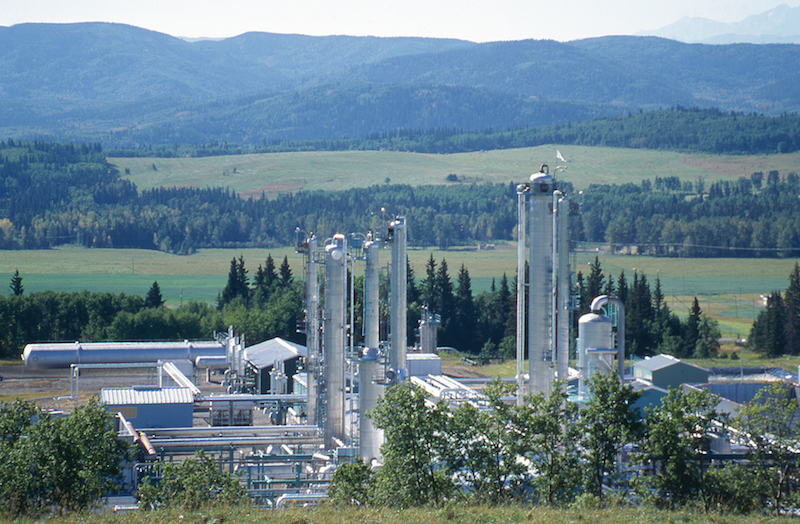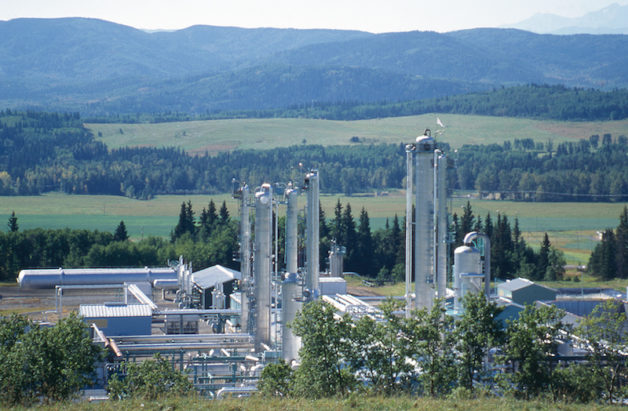The massive natural gas leak at Aliso Canyon shined a light on California’s aging natural gas infrastructure. And five years of extreme drought also exacted its toll on transmission pipelines. Now the Department of Energy’s Lawrence Berkeley National Laboratory (Berkeley Lab) has been awarded $4.6 million by the California Energy Commission for two projects aimed at improving the safety and reliability of the state’s natural gas system.
The first project, led by Yingqi Zhang, will receive $3 million to develop a more comprehensive approach toward risk management, based on integration of real-time data and scientific models. The second project, led by Jonny Rutqvist, will receive $1.6 million to develop a new 3-D methodology to identify and monitor areas at high risk of ground deformation caused by sinking land.
“California’s natural gas wells and pipelines face risks that could cause potential damage or catastrophic events,” said Zhang, a hydrogeologist. “There is an urgent need for a risk management system that is thorough, robust, and reliable and that will facilitate early damage detection and leak prevention.”
Both Zhang and Rutqvist are scientists in Berkeley Lab’s Earth & Environmental Sciences Area. Zhang will lead a multidisciplinary team of scientists who will develop and demonstrate a system aimed at helping facility operators and risk managers characterize, model, and manage the safety and integrity of underground natural gas storage infrastructure.
Scientific models to manage risk
California has 14 underground storage facilities in 12 fields with a capacity of 385 billion cubic feet of natural gas. There are about 350 active wells at those fields, many of which are used currently for natural gas but were designed for oil and gas production and constructed prior to 1970. In addition to leaks through wells, earthquakes, landslides, and caprock fracturing could also cause potential damage to natural gas storage facilities and possible natural gas leakage.
“The way these wells were constructed decades ago may not be adequate for today’s standards,” Zhang said. “The stresses they encounter today when used for natural gas injection and withdrawal were not considered during the original well design process.”
Zhang’s system – dubbed the Integrated Risk Management and Decision-Support System (IRMDSS) – will merge advanced monitoring technologies with scientific models to continuously assess risks and provide early leakage detection. It will also identify potential threats to the system, assist facility operators with managing data and analyzing trends, and eventually help them evaluate options aimed at preventing leaks or mitigating risks.
In other words, IRMDSS will be designed to enable operators to be more proactive in taking preventive measures early on, instead of fixing a problem after it occurs. “Compared to current risk analysis methods, IRMDSS provides a more quantitative, forward-looking analysis with advanced technologies,” she said. “We plan to incorporate real-time data to update our model and update our predictions.”
As an official partner on the project, the Southern California Gas utility will work with the team to test and demonstrate IRMDSS at one of its underground natural gas storage facilities.
How drought led to ground deformation

This map shows areas of subsidence in California. Areas colored in purple and magenta have seen the greatest amount of subsidence. Natural gas pipelines are in black. (Credit: Graphic developed by the California Energy Commission from multiple sources; click to enlarge)
To make matters worse for the state’s aging pipelines, the extreme drought led to large increases in groundwater pumping, which in turn has resulted in unprecedented rates of subsidence. Pacific Gas and Electric Company (PG&E) has said about 50 miles of its natural gas pipelines could be affected by sinking land.
California currently imports about 90 percent of its natural gas, and climate change is expected to only increase the state’s reliance on groundwater. “A fundamental understanding and evaluation of possible impacts on natural gas transmission lines are critical for risk assessment and monitoring,” Rutqvist said.
Berkeley Lab and InfraTerra Inc., in collaboration with the Jet Propulsion Laboratory, PG&E, and Natural Resources Canada, will develop a new methodology that combines large-scale, state-of-the-art remote sensing surveys linked with advanced modeling and inverse analysis of ground deformation. A key advancement of this technology is to consider the full 3-D ground deformations and their impact on pipelines, including both horizontal (lateral) and vertical components of surface deformation.
Surface deformation maps will be integrated with geological, hydrological, and engineering data on the natural gas infrastructure using a geographical information system (GIS).
“We’ll combine all this analysis and try to come up with a predictive methodology to forecast the risk to the natural gas infrastructure posed by future drought-related subsidence scenarios,” Rutqvist said.
Both projects will not only lower costs and provide greater reliability of the natural gas system but will also minimize methane leaks and hence reduce emissions of greenhouse gases and protect public health.
“Our team has a lot of expertise in advanced monitoring technology and modeling,” said Zhang. “It’s very exciting that we can use our knowledge to address a real problem. We expect that application of our system will result in lowered mitigation costs—and prevent disruptions to our energy supply.”
# # #
Lawrence Berkeley National Laboratory addresses the world’s most urgent scientific challenges by advancing sustainable energy, protecting human health, creating new materials, and revealing the origin and fate of the universe. Founded in 1931, Berkeley Lab’s scientific expertise has been recognized with 13 Nobel Prizes. The University of California manages Berkeley Lab for the U.S. Department of Energy’s Office of Science. For more, visit www.lbl.gov.
DOE’s Office of Science is the single largest supporter of basic research in the physical sciences in the United States, and is working to address some of the most pressing challenges of our time. For more information, please visit science.energy.gov.
–Kristine Wong contributed to this article.


